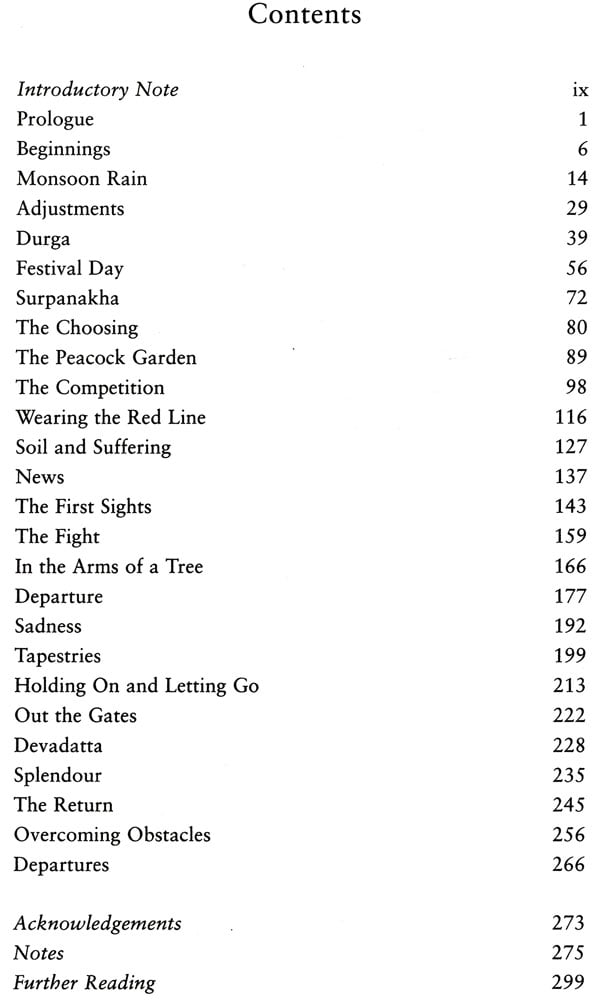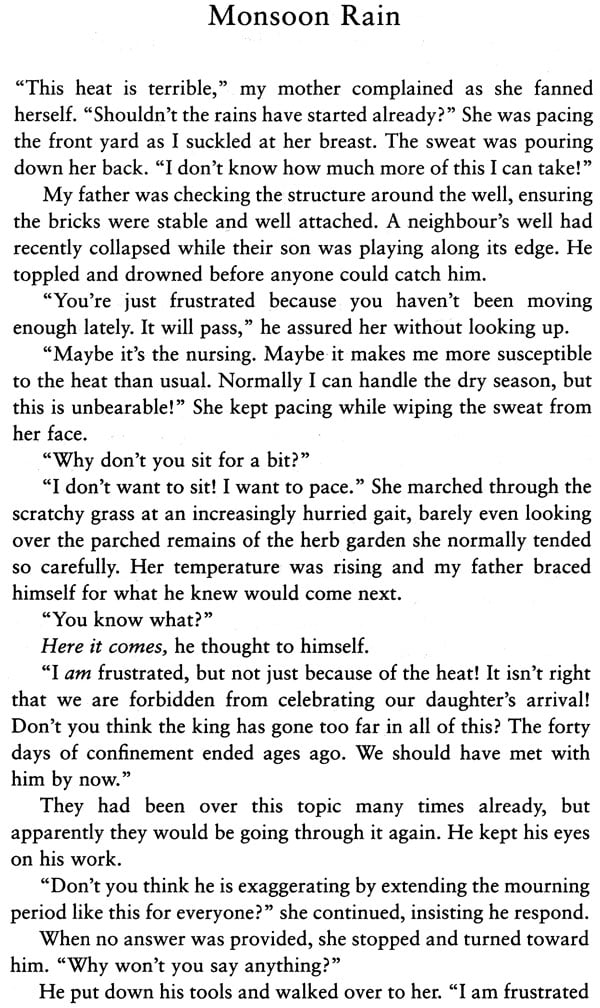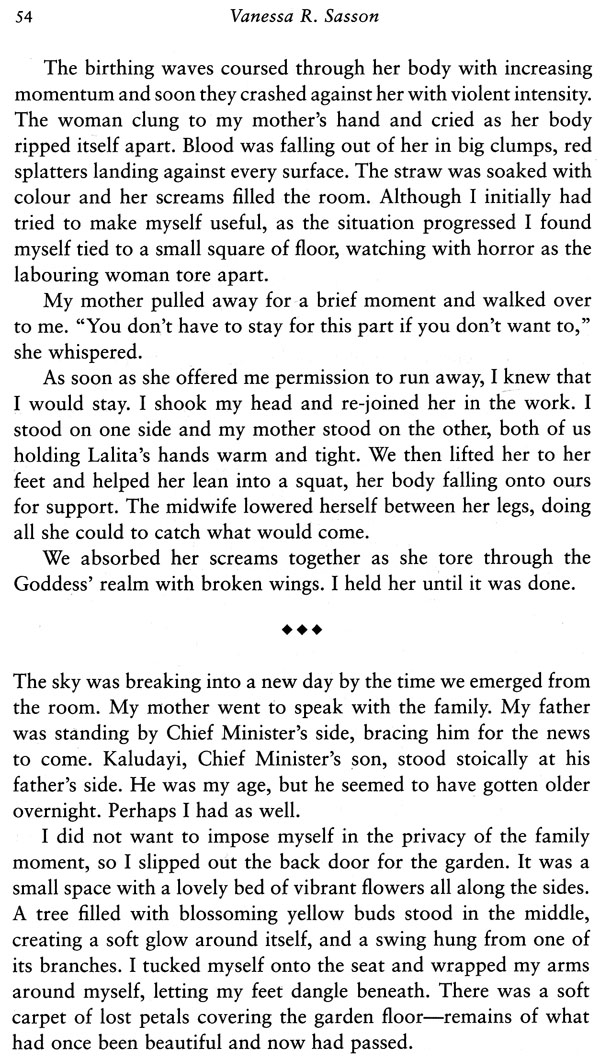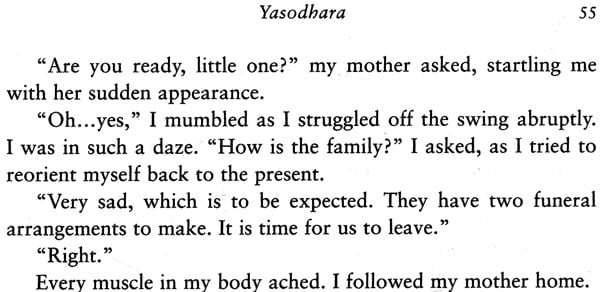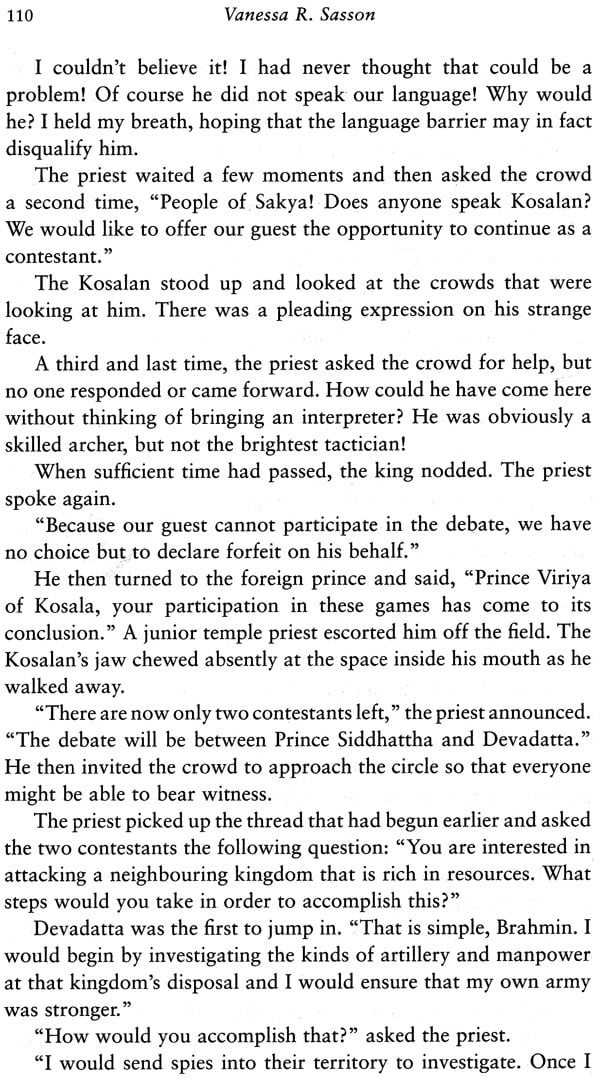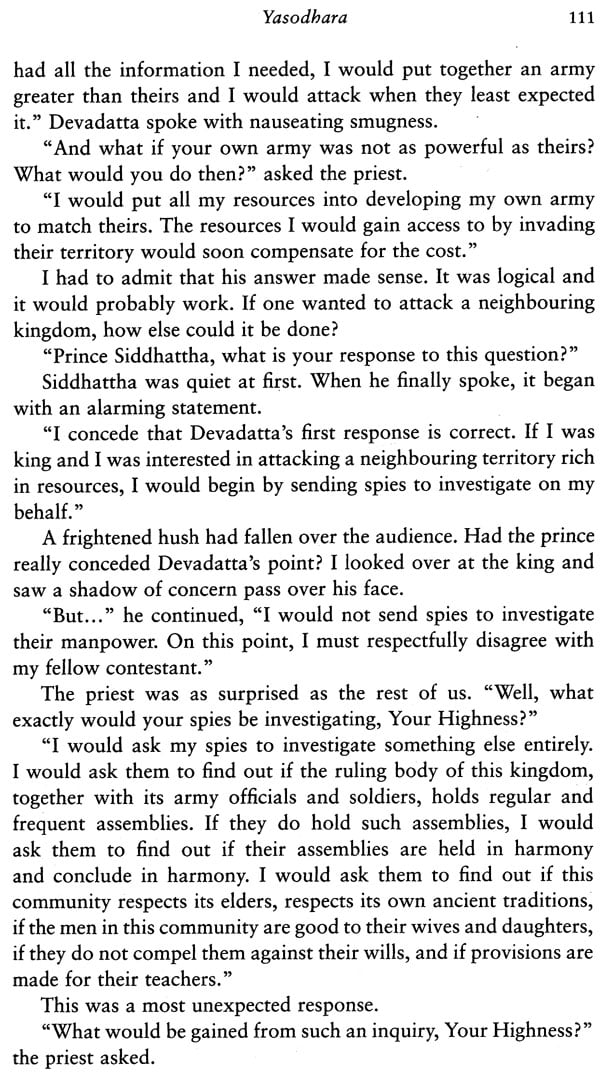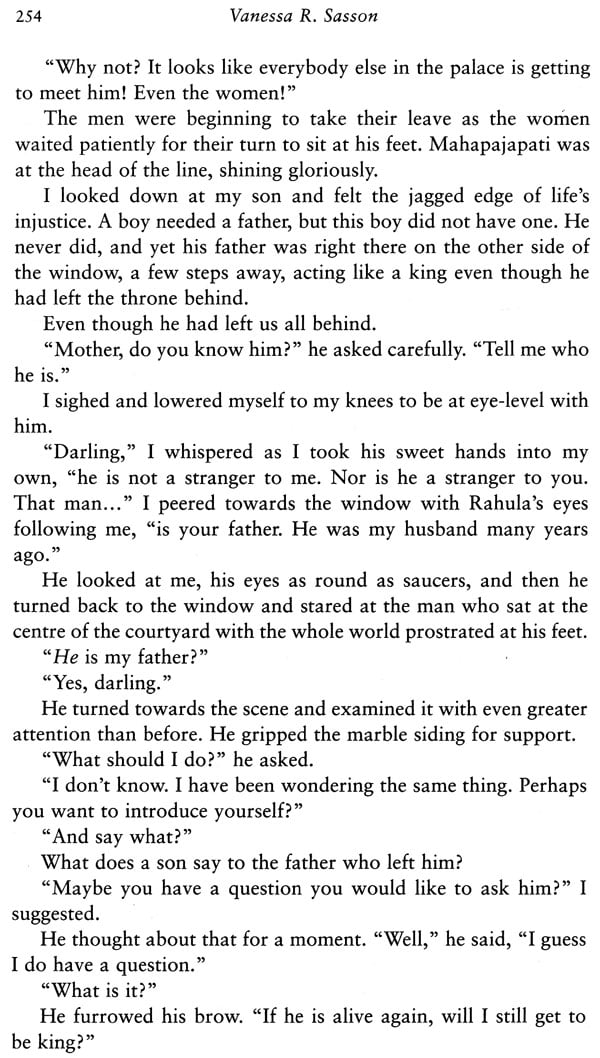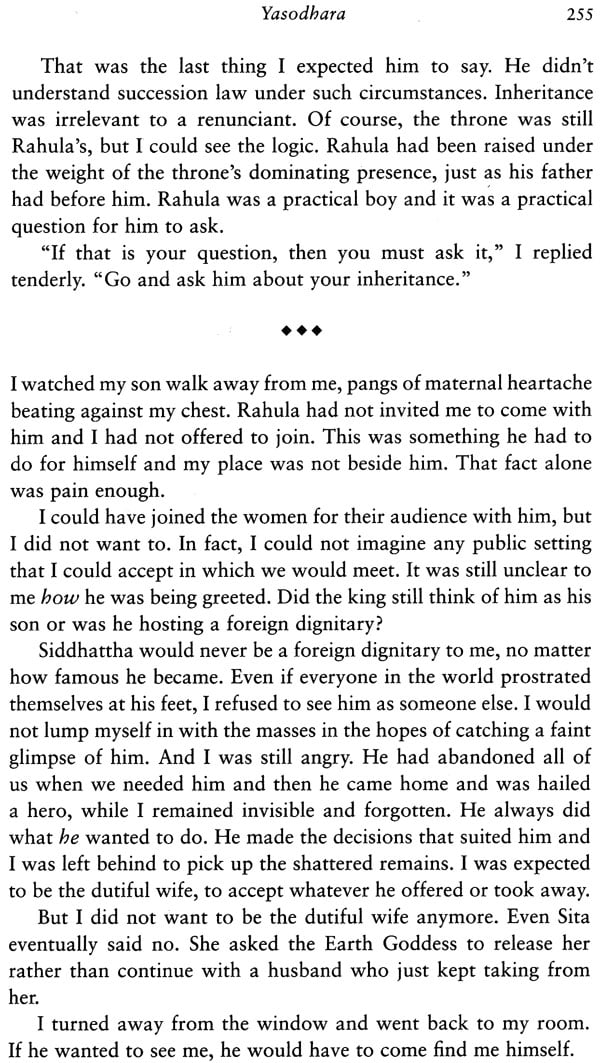
Yasodhara (A Novel About the Buddha's Wife)
Book Specification
| Item Code: | NAV656 |
| Author: | Vanessa R. Sasson |
| Publisher: | Speaking Tiger Publishing Pvt. Ltd. |
| Language: | English |
| Edition: | 2018 |
| ISBN: | 9789387693692 |
| Pages: | 316 |
| Cover: | PAPERBACK |
| Other Details | 8.50 X 5.50 inch |
| Weight | 270 gm |
Book Description
Vanessa R. Sasson is a professor of Religious Studies in the Liberal and Creative Arts and Humanities Department at Marianopolis College, Quebec. She is also a Research Fellow for the International Institute for Studies in Race, Reconciliation and Social Justice at the University of the Free State in South Africa, as well as Adjunct Professor at the Faculty of Religious Studies of McGill University, Montreal. As a scholar, her focus is on Buddhist studies, with particular emphasis on hagiography, gender and childhoods. Vanessa's published books include The Birth of Moses and the Buddha: A Paradigm for the Comparative Study of Religions, and the edited volumes Little Buddhas: Children and Childhoods in Buddhist Texts and Traditions and Imagining the Fetus: The Unborn in Myth, Religion and Culture.
Yasodhara, the Buddha's wife, is not the focus of most early Buddhist hagiographies. The literature preserves fragments of her life, but the focus is (unsurprisingly) usually on her husband. In this book, I have tried to bring together some of these early fragments into the shape of a modern novel, to tell her story from her perspective (as I imagine it). As the writing process unfolded, however, I came to appreciate how much information we are missing. The literature is genuinely scant where she is concerned—particularly regarding her youth. She is a key player during a few moments in the Buddha's life, but otherwise, we know little about her. We know she produced their one and only son, that she was left behind when he made his Great Departure, and that when he returned to the palace seven years later, he took his son back to the forest with him. The Jatakas (past-life stories) refer to her in a number of accounts, suggesting that Yasodhara and the Buddha had been connected for lifetimes, but we do not know much more than that. Indeed, Yasodhara is so marginalized in some cases that she does not even receive a name. She is known simply as Rahulamata—Rahula's mother.
If one digs a little deeper, though, precious details rise to the surface that may enable us to imagine a bit more. The most significant of these may be the fact that Siddhattha and Yasodhara were born at the same moment in their final lives. It was this detail (found primarily in Pali commentaries) that stimulated the direction I have taken in this telling. Yasodhara and Siddhattha plunged into their final lives at the very same instant to land in the same neighbourhood, just a few doors away from each other. The heartbreak she experiences after his departure (which is described in some of the traditional sources) was grounded in the fact that the Buddha took his last steps alone, without inviting her to join him. After countless lifetimes of shared experiences, he abandoned her without even saying goodbye.
There is a lot I could say about the early texts and how they depict the relationship between Siddhattha and Yasodhara, but this book is a novel—not an academic study—and I want to leave it that way. I realize, however, that it might be useful to have a sense of the sources behind this work. I have, therefore, compiled a list of references and reading suggestions that can be found at the end of the book for those interested in learning more.
I do, however, want to make one important caveat (the academic in me is desperate to make at least one!): namely, that this book does not belong to the category of historical fiction (and this not only because the gods are regular actors in the story). Scholars have yet to determine with any material certainty when the Buddha lived (if, that is, he lived at all) and how much of his story might be true. Assuming Yasodhara and the Buddha did live once upon a time, their story presumably took place in northern India (or southern Nepal), somewhere around the fifth century BCE, but maybe in the fourth century, or maybe in the sixth. Whatever the exact dates might have been, the time period feels too distant for me to reach. I cannot imagine northern India (or southern Nepal) in the fifth century BCE, if for no other reason than we have few sources narrating what life would have been like in those days. The earliest Buddhist writings that we do possess come later, beginning around the first century CE (more or less). The stories I have spent my academic life reading are based on the memories of a world five hundred years younger than the one the Buddha and Yasodhara probably knew. I cannot begin to imagine all the changes that took place during the time period we lost. The story I have told here is, therefore, a story inspired by later hagiographies. It is not historical fiction, but perhaps what can be more appropriately labelled `hagiographical fiction' (if such a label existed). This book is my attempt at recreating a hagiography, inspired by hagiographies that belong to an earlier time. It is why, for example, I include a temple with a stone goddess. Temples with stone deities were not likely to have been a regular feature of north Indian religious life during Yasodhara's time period, but by the first century, when this book really takes place, temples had arrived. Likewise, I make reference to Durga, the Ramayana, Shakuntala and many other details that were probably not in written form during Yasodhara's period, but were in circulation later and were most likely based on oral traditions that reached earlier into the past. Some of these stories were probably constructed in tandem with Buddhist hagiography, as narratives from different traditions mingled creatively in the Indian imagination. In other words, some of the material in this book is based on early Buddhist literature. Some of it is based on what we know as early Hindu literature. Some of it may be historical, but most of it is not. And some of it has come out of the playfulness of my mind.
**Contents and Sample Pages**
